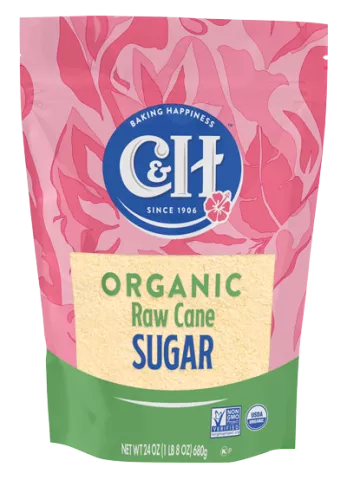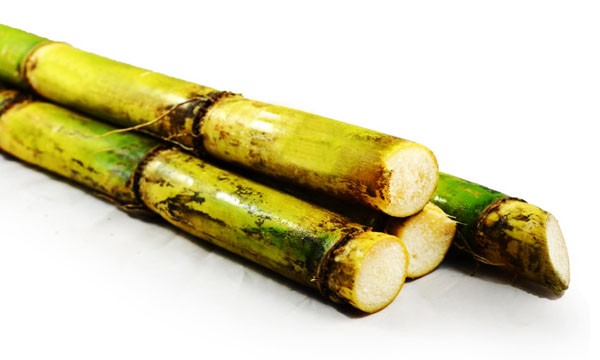The Scientific Research Behind Cane Sugar Processing: Exactly How Sweetness is Fine-tuned
The Scientific Research Behind Cane Sugar Processing: Exactly How Sweetness is Fine-tuned
Blog Article
An In-Depth Overview to the Environmental Effect and Sustainability Practices in Cane Sugar Handling
The environmental influence of walking stick sugar processing provides a complicated selection of difficulties that warrant mindful examination. From soil destruction and excessive water usage to the carbon footprint connected with growing and manufacturing, the consequences of standard methods are far-ranging. In comparison, the adoption of ingenious sustainability procedures supplies a pathway toward much more accountable manufacturing approaches. Comprehending the interaction in between these concerns is crucial for stakeholders in the market. What particular methods can be carried out to strike an equilibrium in between performance and ecological stewardship? The solutions depend on a more detailed look at both the challenges and prospective solutions.
Overview of Walking Cane Sugar Handling
Walking cane sugar processing involves a collection of organized steps that transform sugarcane right into refined sugar. Originally, gathered sugarcane is moved to refining facilities, where it goes through cleaning to remove dirt and debris. Following this, the walking cane is crushed to extract juice, which is after that made clear by getting rid of pollutants via home heating and the enhancement of lime.
The cleared up juice undergoes dissipation, where water is eliminated to focus the sugar material. This concentrated syrup is after that crystallized via air conditioning, allowing sugar crystals to create. These crystals are separated from the staying syrup making use of centrifugation, resulting in raw sugar. To achieve polished sugar, the raw item goes through more filtration processes, which may include filtering and washing to get rid of continuing to be impurities and color.
The end product is then dried and packaged for distribution. Throughout this entire process, preserving effectiveness and quality assurance is important to make certain the sugar meets industry standards. Each action in walking stick sugar processing not only adds to the last item yet additionally has effects for source usage and waste generation, establishing the phase for discussions on sustainability and environmental effects connected with sugar manufacturing.
Environmental Difficulties of Production
The production of walking stick sugar offers several considerable ecological difficulties that warrant focus. One key issue is the considerable usage of agrochemicals, consisting of plant foods and pesticides, which can bring about soil deterioration, biodiversity loss, and contamination of regional water sources. The runoff from sugarcane fields often lugs these chemicals right into nearby communities, interrupting aquatic life and affecting the health of neighborhoods reliant on these water bodies.
One more difficulty is the high power usage connected with sugarcane processing. The boiling and refining stages need substantial warmth, mostly generated by melting fossil gas, adding to greenhouse gas discharges. Additionally, the large land area needed for sugarcane growing can lead to logging and habitat devastation, additional intensifying climate modification and threatening wild animals.
Additionally, the labor practices in some areas raise moral issues, as employees may encounter bad working problems and insufficient wages. This circumstance typically perpetuates a cycle of destitution in local areas. Cane Sugar Processing. Dealing with these environmental difficulties is crucial for establishing more lasting techniques in walking stick sugar production, eventually benefiting both the setting and the neighborhoods entailed in this market
Water and Land Use Impact
Water sources and land use are vital components in the cane sugar sector that dramatically affect the environment. The cultivation of sugarcane requires significant water input, with quotes recommending that it can consume as much as 2,000 litres of water per kilo of sugar generated. This intensive use of water often causes depletion of neighborhood water sources, influencing not just the sugarcane plantations but additionally surrounding environments and areas that count on the very same water sources for farming and domestic usage.

Additionally, land usage for sugarcane farming can cause logging and the conversion of natural environments into monoculture ranches. This method lessens biodiversity, interferes with neighborhood communities, and adds to dirt destruction. The development of sugarcane fields often encroaches on valuable farming land, producing competition for sources between see here food and biofuel production.
Lasting methods, such as enhancing watering methods and executing plant turning, are important to alleviate these influences. By adopting much more reliable water use and land monitoring methods, the walking cane sugar sector can minimize its eco-friendly impact, making sure a balance between farming productivity and environmental best site preservation.
Greenhouse Gas Emissions
Greenhouse gas discharges stand for a substantial ecological issue within the walking stick sugar handling market, especially as farming techniques broaden to satisfy worldwide demand. The cultivation of sugarcane, a crop that grows in exotic environments, relies greatly on artificial fertilizers and chemicals, which add to nitrous oxide exhausts. In addition, land-use adjustments, including logging for new sugarcane vineyards, release co2 stored in plants and dirt.
Throughout handling, energy consumption is one more significant resource of greenhouse gas emissions - Cane Sugar Processing. Several sugar mills use nonrenewable fuel sources to power equipment and produce warm, causing significant carbon impacts. Moreover, the transport of raw sugarcane and finished products adds layers of exhausts through fuel combustion in automobiles
The advancing result of these discharges intensifies climate change, positioning dangers not just to the environment but additionally to the lasting stability of the market. Stakeholders need to acknowledge the immediate requirement for comprehensive methods that deal with these exhausts. This entails examining current farming methods, processing techniques, and transportation systems to determine areas for enhancement and mitigation. Resolving greenhouse gas discharges is essential for fostering a more sustainable walking cane sugar sector in an altering climate.

Lasting Practices and Innovations
Sustainable techniques and innovations are increasingly essential in the cane sugar processing market as stakeholders look for to minimize environmental influences while maintaining efficiency. One substantial development is the implementation of integrated crop monitoring, which optimizes resource usage by combining soil management, pest control, and plant turning methods. This approach boosts return while lessening chemical inputs and protecting soil health and wellness.
Furthermore, the fostering of renewable energy sources, such Clicking Here as biomass from sugarcane residues, has acquired grip - Cane Sugar Processing. By converting waste items into power, refining facilities can minimize their reliance on fossil fuels, consequently reducing greenhouse gas discharges
Water monitoring techniques have likewise seen improvements via the recycling and reusing of water in processing plants, significantly minimizing freshwater intake. Technologies in innovation, such as accuracy farming, allow farmers to keep track of crop wellness and source use better, making sure lasting cultivation techniques.
Moreover, qualification programs like Fair Profession and Jungle Partnership motivate environmentally responsible farming techniques and promote social equity within the supply chain. By accepting these lasting techniques and advancements, the walking stick sugar handling sector can enhance its strength and contribute favorably to environmental stewardship.
Conclusion
The ecological impact of walking stick sugar processing provides significant difficulties, consisting of soil deterioration, high water intake, and greenhouse gas discharges, along with moral concerns connected to labor techniques. Addressing these issues through sustainable methods, such as integrated crop monitoring, renewable resource fostering, and water recycling, is necessary. By advertising socially equitable and environmentally accountable approaches in sugar manufacturing, the market can minimize its adverse effects, making certain an extra lasting future for both communities and neighborhoods entailed in this sector.
Cane sugar processing entails a collection of organized actions that change sugarcane into refined sugar. Each step in walking cane sugar handling not just contributes to the last item but additionally has effects for source use and waste generation, setting the phase for discussions on sustainability and environmental effects linked with sugar manufacturing.
Greenhouse gas emissions represent a considerable environmental problem within the walking cane sugar processing market, particularly as agricultural techniques increase to fulfill global need.Lasting techniques and technologies are increasingly important in the cane sugar processing industry as stakeholders seek to minimize environmental effects while maintaining efficiency.The ecological effect of walking stick sugar handling presents considerable difficulties, consisting of dirt degradation, high water usage, and greenhouse gas exhausts, along with ethical issues connected to labor techniques.
Report this page